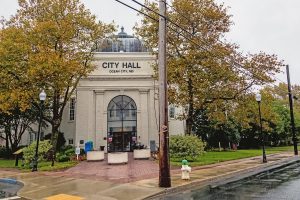
OCEAN CITY – A code amendment pertaining to non-accessory workforce housing will advance to a first reading following a lengthy discussion on conditional use and density.
In a work session Monday, the Mayor and Council agreed to forward an ordinance on non-accessory workforce housing to a first reading. Planning and Community Development Director Bill Neville said the changes would provide incentives to build off-site employee housing projects in town.
“There are several projects we know of that are waiting to be fed into the development pipeline waiting on the decision of this ordinance,” he said. “I think it will open some immediate opportunities for people moving forward with this non-accessory employee housing. It may not be built until next year, but there are opportunities moving forward.”
Since last year, resort officials have been working on a proposed code amendment that could help address a shortage of workforce housing in Ocean City. As it currently exists, the town code defines employee housing as accessory use, or living quarters with a portion of a main building or an accessory building located on the same site to be used by individuals employed on the premises. But officials are looking to include employee housing as non-accessory use.
Neville said this week the proposed code amendment was brought to the Mayor and Council on April 11. At that time, the amendment included new terms and definitions, as well as a tier system for approving small, medium and large standalone employee housing projects.
However, since the amendment was forwarded to a public hearing in May, members of the Ocean City Planning and Zoning Commission have made three significant changes.
Tier one projects, with 16 or fewer residents, would be approved through the building permit process, while tier two projects, with 40 or fewer residents, and tier three projects, with greater than 40 residents, would be approved through the conditional use process.
The commission also modified district regulations so that R-2 and R-2a residential districts would only allow tier one projects, the R-3 and R-3a residential districts would only allow tier one and tier two projects, and all other zoning districts, including commercial, would allow all project sizes.
“If we were concerned about making sure a large employee housing project was not located next to our R-1 single-family neighborhoods, this essentially builds in a mechanism so that only the largest projects would be located only in our commercial district,” Neville told the council this week.
For his part, Councilman Peter Buas said he preferred the code amendment presented to the Mayor and Council in April. At the time, only tier three projects required conditional use.
“Since then, I think we’ve taken a step back and made it a little less usable,” he said. “For example, a conditional use in tier two and three really makes it so what’s set up is not substantially different than what was set up a year ago.”
Buas then made a motion to forward the ordinance to a first reading, but to restore the tiers so that tier one is less than 16 residents, tier two is between 17 and 60 residents and tier three is greater than 60 residents.
He also recommended restoring the application process so that tier two projects require site plan approval, not conditional use, and revising the zoning district regulations so that non-accessory workforce housing is prohibited in the R-1 and MH districts, tier two and three projects are permissible in the R-2 and R-2a districts, and all tiers are permissible in all other districts.
Buas also included changes on the timing of deed restrictions and parking regulations, which would allow one space per bedroom for the first two rooms and half a space for every room thereafter.
When asked if his motion would be brought before the planning and zoning commission for review, Buas said he was making a motion to prepare an ordinance for first reading with his proposed changes.
“The only change I’m making from April 11 is parking,” he said. “That’s it. Everything else is the same.”
Councilman John Gehrig, however, said he liked the idea for requiring a conditional use for tier two and tier three projects. Mayor Rick Meehan agreed.
“It gives surrounding property owners the right during the public hearing to express their concerns where then the planning commission can put conditions on the proposed building to make sure it’s more compatible,” he said.
Buas said he took issue with the lack of predictability afforded to developers with the conditional use process.
“The problem with the conditional use is it offers no predictability in the code …,” he said. “We want to look at the code and know what we can build. We don’t want people deciding what they like or don’t like about a project.”
After a lengthy debate, however, Buas agreed to strike his change regarding the approval process and keep tier two and tier three projects as a conditional use.
“We can keep conditional use for tier two and review it in a year,” said Council President Matt James. “If it’s not necessary, we drop it.”
The council voted 6-0, with Councilwoman Carol Proctor absent, to forward the ordinance on non-accessory workforce housing to a first reading with Buas’ changes.
